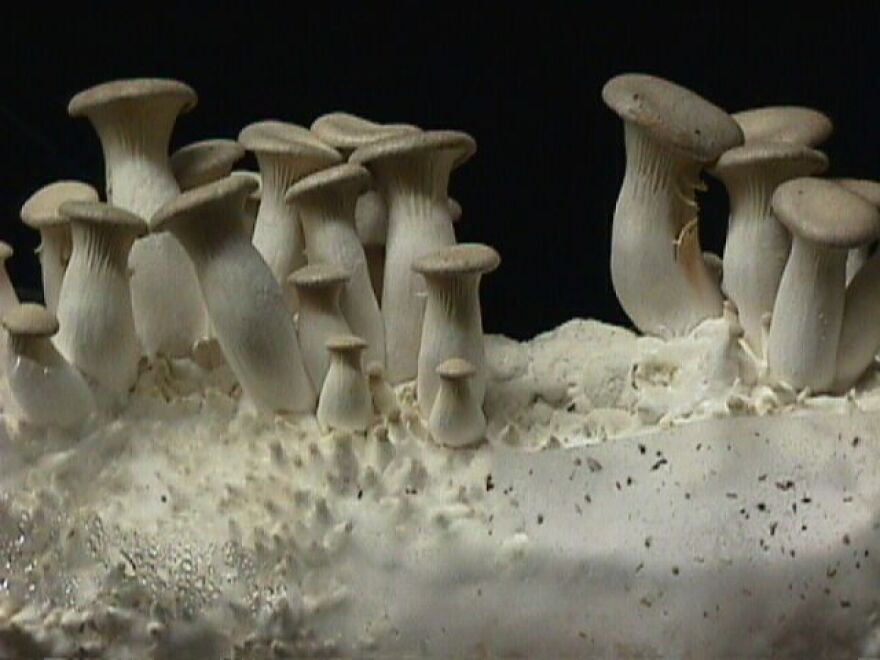A team of University of Delaware researchers is using mushroom roots to develop biodegradable shoe soles.
After a shoe is thrown out, it heads to a landfill. But a lot of shoes are made of material that can’t decompose.
UD researchers are combining the roots of locally grown mushroom species with chicken feathers and cellulose textile waste to provide an environmental alternative to cheap fashion.
“Everything is renewable that’s going into it. We’re using plant waste material, and flour as a nutritional component,” said Jill Silverman, a graduate research assistant in UD’s Department of Fashion and Apparel Studies.
She continued, “And we’re looking at using natural textile — [a blend of cotton, jute and cornstarch from a sustainable food bod] which would also be a post-consumer waste textile that we could use instead of sending it to landfills or having to biodegrade that separately.”
With a $15,000 grant from the Environmental Protection Agency, the team has made their first prototype — a sandal sole. They’ve been testing the strength of the fungal composite to see how much pressure it could handle from a human foot.
“The ultimate goal would be to help combat fast fashion by making a biodegradable textile that uses no toxic materials and contributes no waste to the waste stream,” Silverman said.
The team has been sourcing inoculated spawn blocks from local mushroom farms. They add in a selected substrate material that mushrooms use as nutrition to grow on. After they grow for about a week, the researchers bake the mushrooms to stop them from fruiting. Then, they take the root structures to use them in their composite materials.

Silverman said they’ve tried eight different species of edible mushrooms so far. King Oyster seems to work the best for the shoe soles because of its denser root structure that makes it more durable.
The team received chicken feathers and cellulose textile from Goodwill DE and spent mushroom substrates and cultures to grow their own mushroom roots from Phillips Mushroom Farm in Kennett Square, Pennsylvania. The town is known as the “mushroom capital of the world.”
Tina Ellor, a mycologist and the technical director of Phillips Mushroom Farm said the concept of using mushrooms in fashion is an “idea that’s time has come.”
“Mushroom mycelium is incredibly strong, water repellent, and has insulating qualities,” Ellor said.
She continued, “In a nutshell what we’re doing is taking things that are going to rot anyway, controlling their rotting, harvesting mushrooms and all the substrates go back into agriculture — into crops and potting soil. We are the premier recyclers in agriculture.”
In New York, a company called Ecovative Design uses mushroom roots instead of styrofoam for packaging material. They are also making shoe soles out of mycelium.
The UD researchers have only finished their first prototype, but UD fashion and apparel professor Huantian Cao says the final product will be something comfortable people can walk in and dispose of environmentally.
“After the consumer finishes using that shoe sole, the consumer can easily throw the shoe into their backyard or garden and that will return all the biodegradable, natural material back to the soil to be used as fertilizer,” Cao said.
They’ll present their prototype in Washington D.C. this weekend as part of the USA Science and Engineering Festival.





